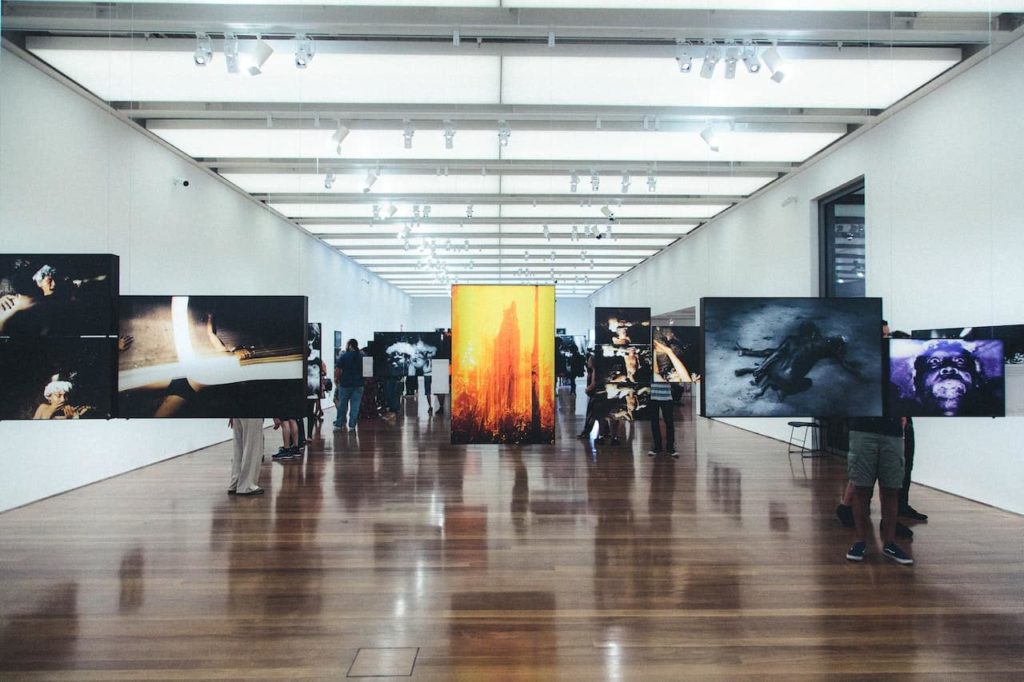The Internet of Things is frequently used in most commercial and industrial settings, but it’s also beginning to be adopted by a broad range of public institutions, such as galleries and museums. These types of public institutions are a vital part of society and our ability to maintain a connection to our history and cultures.
There is a plethora of unique IoT innovations that can be utilized in smart museums. These innovations can change the way smart museums are experienced and maintained. Using new IoT technology can also gather real-time feedback from visitors, allowing the museums to adapt to enhance visitors’ experiences.
We created this article to showcase five amazing IoT innovations that can be implemented in smart museums to give you a general understanding of how this technology can change how museums operate and how visitors experience them.
Related: 7 Key Tips for Navigating Smart Building Design
Preservation of Artifacts
Preserving historical artifacts presents several challenges. These artifacts tend to be enormously sensitive to the slightest humidity, light, and temperature changes. Museums are spacious, and it’s not easy to maintain a moderate temperature in such large spaces, so monitoring environmental fluctuations are essential.
Minor fluctuations in temperature, prolonged exposure to sunlight or fluorescent light, and exposure to moisture can damage historical artifacts. They can become warped, shrunk, decayed, discolored, or faded.
This is where IoT technology comes into play. By installing IoT sensors, museum staff will be able to monitor and adjust temperature, humidity, and light as needed. The ability to precisely monitor and control these environmental factors will lead to far fewer restoration projects and protect valuable artifacts from damage. It will also help museums monitor their energy uses, which can reduce operating costs and help museums run more efficiently.
Are you looking for help acquiring the right technology for your business? Contact us at CC-TechGroup today to learn how we can help.

Interactive Exhibits
Using IoT technology for interactive exhibits will help visitors become immersed in the experience, which can help museums bring in new customers and retain old customers. There are currently 35,000 museums in the US, so competition for repeat customers is fierce. Bringing something unique that the competitors don’t have to the table, such as interactive exhibits, will attract and retain new visitors.
There are plenty of ways museums can use IoT technology to create interactive exhibits. Some museums have already jumped on this trend and have systems in place that capture ocean sounds from nearby and transmit them into the museum. Other facilities have utilized wearable technology to guide participants on a scavenger hunt through the museum.
The sky’s the limit with the ways IoT technology can help create interactive exhibits. It could even be used in a more straightforward format to allow visitors to create their own personalized routes through the exhibits so that they can feel more in control of their experience.
Visitor Preferences
One of the challenges with museums is learning to cater to the majority while still retaining essential exhibits that may receive less attention. Many visitors go to museums to experience unique exhibits, learn about something new in a fun way, or see an exhibit that’s been recommended to them by a past visitor.
Utilizing IoT technology can help museum curators better understand the trends of their visitors. By using presence detention sensors, curators can see in real-time which exhibits receive the most visitors throughout the day and how much time people typically spend at each exhibit.
Wireless IoT sensors can monitor visitors’ vital signs from a distance and record their respiratory and heart rates. This information will show which exhibits caused the most excitement for visitors, which can help curators determine the best ways to keep visitors engaged during their experience. This will allow museums to offer more exhibits that attract the most visitors and retain their attention for the longest time.
Related: 8 Cutting Edge Examples of IoT in Retail
Management and Security of Artifacts
Unfortunately, priceless historical artifacts tend to attract the lesser moral members of society. Artifacts frequently get stolen, and museums are constantly trying to find new ways to manage and secure their valuable pieces.
Using IoT technology can make an enormous difference on this front. For example, IoT sensors can be placed on all windows and doors of a museum. These sensors can alert security in real-time every time a window or door is opened, closed, or damaged. Vibration and movement sensors can also be placed around individual artifacts, which can alert security when an artifact is touched or moved.
Another idea is to use IoT sensors with Bluetooth Low Energy beacons to track individual artifacts whenever they move. This will help prevent artifacts from becoming misplaced or stolen and provide staff with critical information on the artifact’s condition.
Detecting Leaks
The final item on our list may be less sensational than the others, but it’s no less important. Leaks from air conditioning units, septic systems, or a terrible rain storm can have long-lasting and devastating impacts on museums.
As we discussed earlier, historical artifacts must be kept in certain conditions. Exposure to moisture can severely damage or even ruin priceless artifacts, which is why leak detection is so important.
Water leak sensors can be placed at critical points in the museum to alert staff at the first sign of water exiting a pipe or entering the building. This IoT technology can increase response times to deal with the problem more quickly. Being able to pinpoint exactly where the leak is coming from at the exact moment it happens can drastically reduce damage to artifacts caused by leakage.
Are you ready to transition your business to the latest and greatest technology? Visit us at C&C Technology Group to learn how we can help!

How IoT Innovations Can Be Used In Museums
Using the Internet of Things in smart museums is an amazing way to change how museums are managed, kept secure, and experienced by visitors. There are many ways IoT innovations can be used, and these five ideas are simply a way to conceptualize the potential of this technology. IoT innovations will continue to become more commonplace in public institutions such as smart museums and their benefits will continue to be seen and expanded upon.
Related: 10 Best Smart Building Companies of 2022
Last Updated on September 8, 2022 by Josh Mahan




